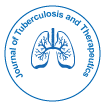Predictors of Poor Tuberculosis Treatment Outcome at Arba Minch General Hospital, Southern Ethiopia: A Case-Control Study
Received Date: Jul 03, 2017 / Accepted Date: Dec 13, 2017 / Published Date: Dec 20, 2017
Abstract
Introduction: Tuberculosis (TB) is a major public health problem throughout the world. About a third of the world’s population is estimated to be infected with TB and hence at risk of developing active disease. Ethiopia ranks seventh among the world's 22 countries with a high burden of TB. This study was aimed at assessing the predictors of poor TB treatment outcome at Arba Minch General Hospital (AMGH), Southern Ethiopia.
Methods: A case-control study comprising simple random sampling was conducted from Jan to Feb 2014. Cases were patients registered as treatment failures, defaulted or died during TB treatment follow up; and controls were patients registered as cured or completed the treatment in the period of 1st Jan 2009-30th Dec 2013 in AMGH. A prepared standard checklist adapted from WHO was used to assess the predictors of poor treatment outcome. A chi-square test and a paired T-test were used to compare categorical and continuous variables in cases and controls, respectively. Multivariable logistic regression was used in the final model.
Results: The case group was composed of 224 patients with poor treatment outcome while the control group was composed of 448 patients with successful outcome. Male sex (Adjusted Odds Ratio (AOR)=1.6; 95%CI: 1.1-2.3), age >35 years (AOR=2.4; 95%CI:1.6-3.4), rural residence (AOR=1.5; 95%CI:1.0-2.2), retreatment category (AOR=3.3; 95%CI:1.3-8.4), smear negative Pulmonary TB (AOR=2.4; 95%CI:1.4-4.1), Extra-pulmonary TB (AOR=2.5; 95%CI:1.3-4.6), HIV positives (AOR=2.4; 95%CI:1.6-3.5) and TB treated (unknown HIV status) in the year before 2011 (AOR=2.5; 95%CI:1.3-5.1) were found predictors of poor TB treatment outcome.
Conclusion: Male sex, rural residence, older age, previous treatment, smear negative PTB and EPTB, HIV coinfection, unknown HIV status but treated for TB before 2011 were found significant risk factors for developing poor treatment outcome. Targeted measures should be considered to reduce the proportion of poor outcome among highrisk groups.
Keywords: Tuberculosis; Predictors; Human immunodeficiency virus; Highly active anti-retroviral therapy; Cotrimoxazole prophylaxis therapy
Citation: Dale D, Nega D, Yimam B, Ali E (2017) Predictors of Poor Tuberculosis Treatment Outcome at Arba Minch General Hospital, Southern Ethiopia: A Case-Control Study. J Tuberc Ther 2: 110.
Copyright: © 2017 Dale D, et al. This is an open-access article distributed under the terms of the Creative Commons Attribution License, which permits unrestricted use, distribution, and reproduction in any medium, provided the original author and source are credited.
Share This Article
黑料网 Journals
Article Usage
- Total views: 4051
- [From(publication date): 0-2017 - Nov 23, 2024]
- Breakdown by view type
- HTML page views: 3266
- PDF downloads: 785
